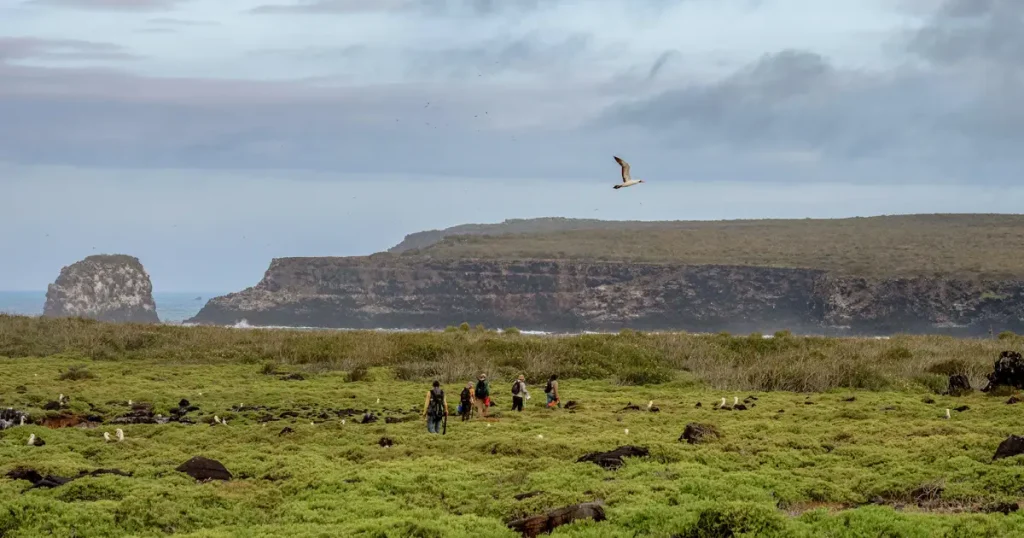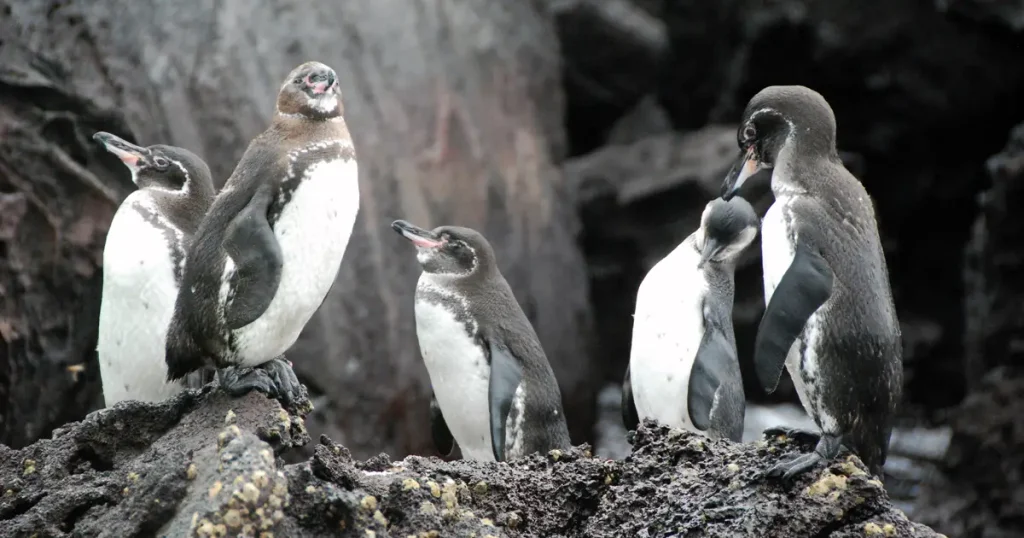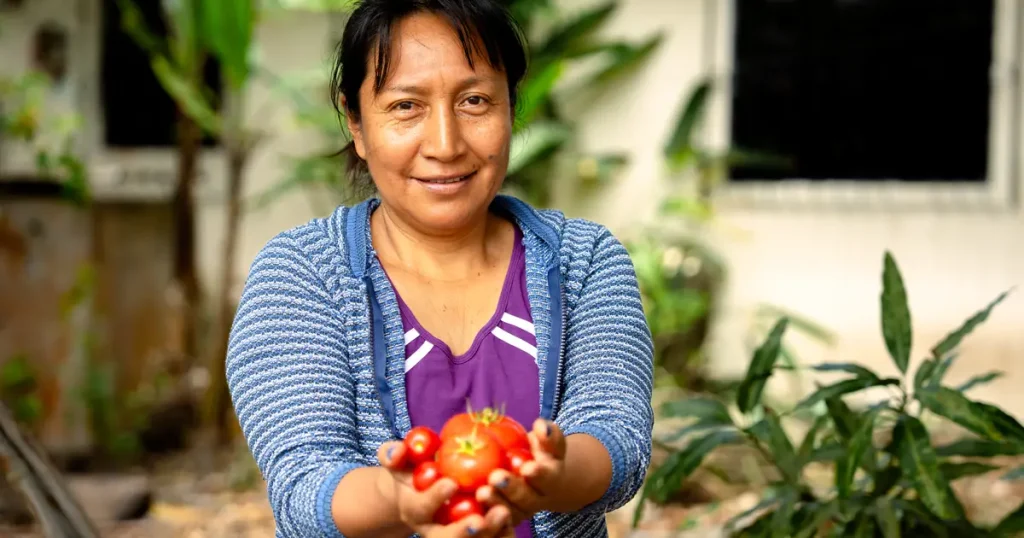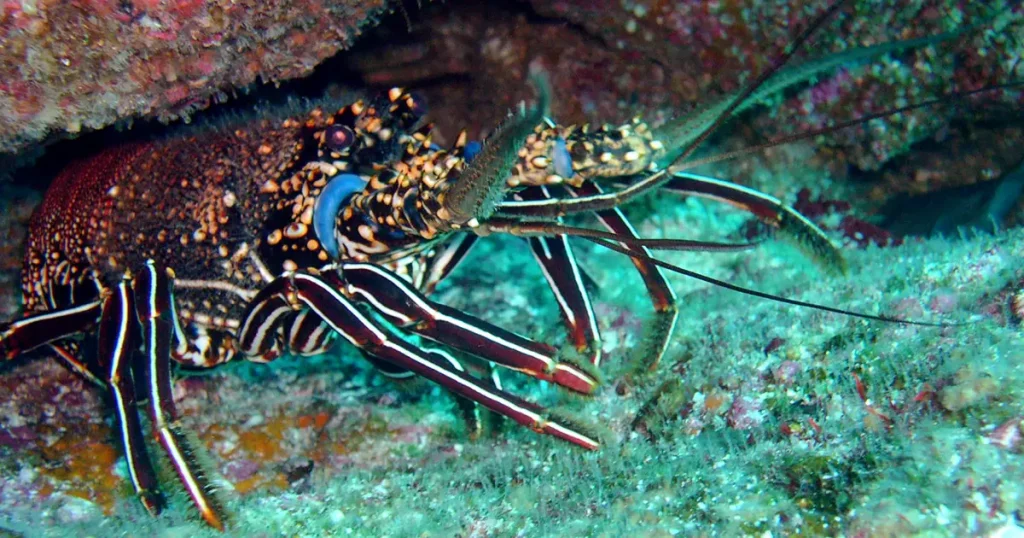In Search of the Lost Nest: Science in Defense of an Endangered Species
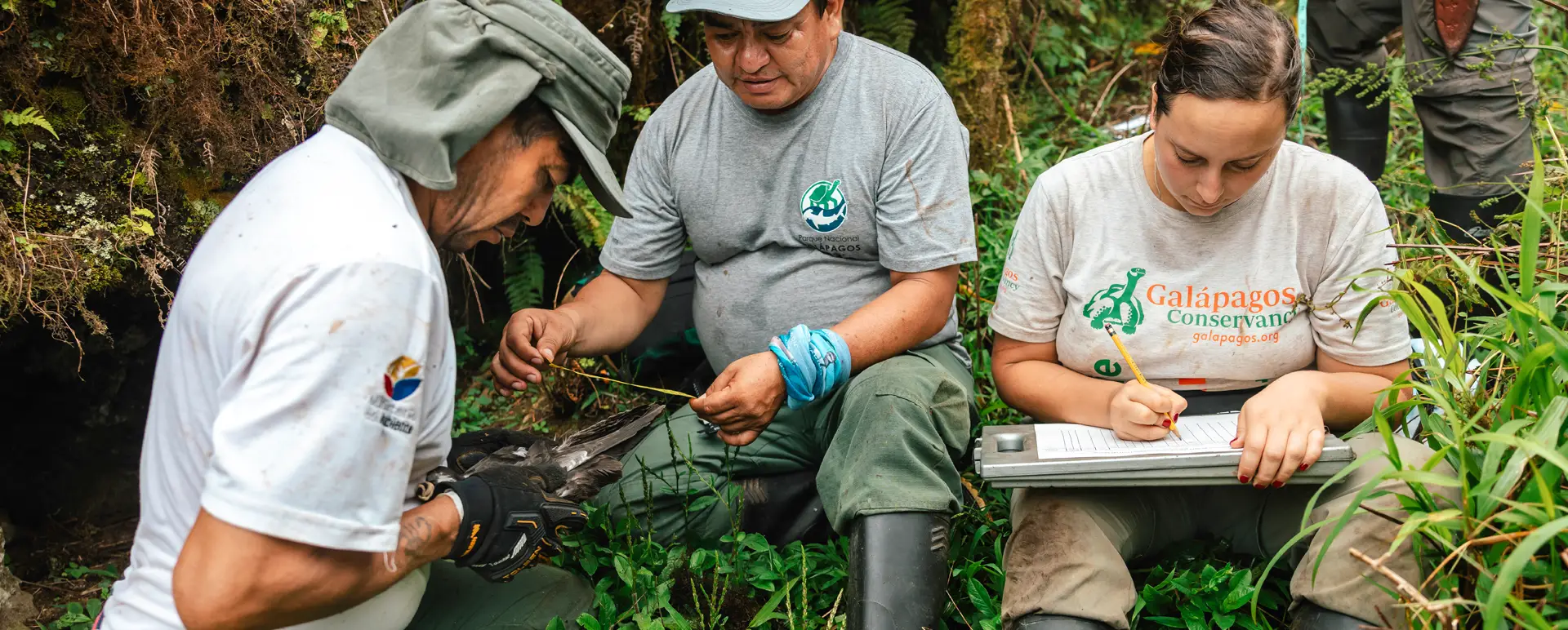
High in the misty highlands of Santiago Island, where the forest is silent and thick with moisture, a team of researchers and park rangers moves carefully through the terrain, searching for a sign of life. Their mission: to protect the Galápagos petrel, one of the most endangered seabirds on the planet. With advanced technology, constant monitoring, and science applied with precision, they navigate a fragile ecosystem that still holds hope. Through drones, fieldwork, and nest analysis, they demonstrate that when knowledge becomes sustained action, conservation becomes something real, measurable, and full of promise.
Early in the morning, before sunlight filters through the trees, Doménica Pineda adjusts her backpack and steps into the damp forest of Santiago. She carries a flashlight, a field notebook, and an urgent mission: to find signs of the Galápagos petrel—a secretive bird that lives out of sight, whose future hangs by a thread.
“Finding an active nest really makes your day,” says Doménica, a Galápagos Conservancy consultant and coordinator of the petrel conservation program. “It’s proof that they’re still fighting to survive.”
Alongside park rangers and technical staff, Doménica gathers information that reflects the bird’s current status and helps guide decisions that could determine its future.
During each expedition, the team moves in silence, alert to any trace. Guided by maps, GPS, and years of experience, they explore the island’s highlands, where unstable ground and dense vegetation slow every step. They listen for the faintest sound, searching for a feather, a broken eggshell, the hidden entrance to a nest.
Surviving Danger in Silence
The Galápagos petrel (Pterodroma phaeopygia) spends most of its life flying over the ocean. It feeds on squid that rise to the surface at night and returns to land only to nest. It chooses remote, humid areas between 300 and 900 meters above sea level. There, it digs into soft soil or settles into natural cavities and old lava tunnels hidden by vegetation—a strategy to avoid predators by remaining unnoticed, discreet, nearly invisible.
But the threats facing the petrel today are many and growing. For centuries, its nesting strategy kept it safe. Now, it makes it vulnerable. Habitat degradation, the spread of invasive species like rats and ants, and the aggressive advance of plants such as blackberry and guava are taking their toll.
The consequences are devastating. The Galápagos petrel is listed as Critically Endangered by the International Union for Conservation of Nature (IUCN), due to a rapid population decline. In just three generations, its numbers have dropped to a fraction of what they once were.

A Landscape Changing Faster Than the Species
Many historical nesting areas have been overtaken by invasive plants like blackberry and guava, which form dense, impenetrable thickets. When the team reaches these sites, they often find the burrows covered—no longer accessible to the birds that instinctively return year after year.
Doménica and her colleagues can hear them from a distance, circling above the places where they once raised their young. And for those birds that do manage to nest, the danger isn’t over: invasive rats and ants destroy eggs or kill chicks before they ever get a chance to live.

Steady Steps on Volcanic Ground
Habitat quality is critical to the petrel’s reproductive success. It needs stable soil, suitable vegetation, and minimal disturbance to survive.
In every expedition, the Galápagos Conservancy team and the park rangers carry out three essential tasks to protect the petrel:
First, they gather accurate information about active nests—location, condition, and occupancy. Then, they intervene directly to reduce threats, setting traps and applying control methods against invasive species like rats and ants. Finally, they search for historical nesting areas overrun by invasive vegetation and restore them, clearing the way for petrels to return to places that were once theirs.
These three lines of action—monitoring, threat control, and habitat restoration—form the backbone of the plan that guides every step in the field.
The team’s work is as quiet as the bird they protect. But every discovery matters. When they find an active nest, they log its coordinates, observe the bird’s behavior, and document the condition of the site. Drones help scan the terrain for hidden nests and invasive vegetation without disturbing sensitive areas. This blend of field science and technology expands the scope of monitoring and makes conservation efforts more effective. Everything is recorded; every detail matters.
“Every time we find a chick, we feel the effort is worth it,” says Fidelino Gaona, a park ranger and member of the expedition. “It’s a sign they’re still fighting, and that our work has meaning.”
On a previous expedition, the team recorded 340 nests, with activity in 108 of them. They observed 50 adults—some paired, others incubating eggs. This data forms the foundation for future fieldwork, feeding scientific databases and strengthening the team’s resolve.
“We find bits of eggshell, loose feathers, and sometimes—if we’re lucky—an adult incubating,” says Doménica, reviewing her field notes at a monitoring site in Santiago. “They’re subtle clues, but when you see them, you know the petrel is still here. Still trying.”
Signs That Keep Hope Alive
Each expedition is more than just a field operation. It’s a statement of commitment, a deliberate act of responsibility toward a species that could vanish without a trace. But as long as there are active nests, there is hope.
Thanks to the support of the National Fish and Wildlife Foundation (NFWF), Galápagos Conservancy’s strategic partner, these actions can continue over time. Protecting the petrel isn’t a short-term effort—it’s an investment in the future of biodiversity.

“We know one visit isn’t enough. This is part of a long-term effort that only makes sense if it’s sustained,” says Dr. Jorge Carrión, Director of Conservation at Galápagos Conservancy. That’s the belief that drives every expedition: science can save a species—but only with persistence, continuity, and teamwork.
High in the hills of Santiago, where mist clings to the forest and the terrain resists each step, the work goes on. And although the petrel remains in danger, its quiet presence reminds us that there is still time.
Science continues its search. And the petrel, for now, tenaciously holds on.

Share:
